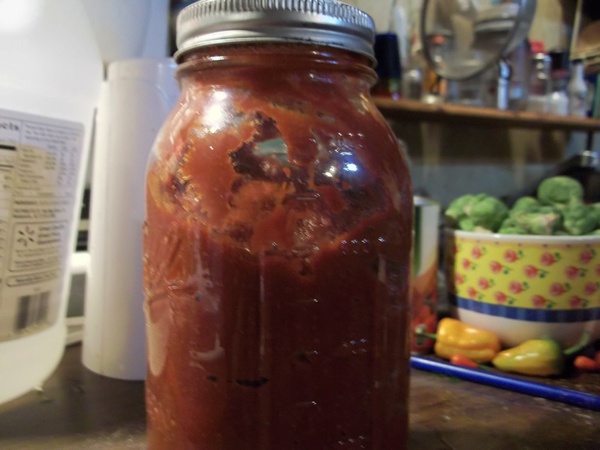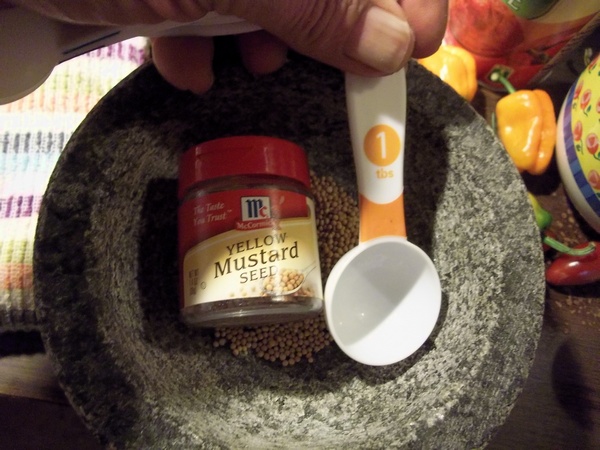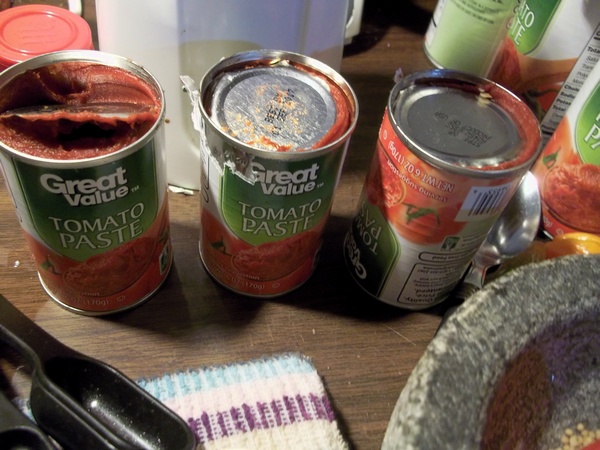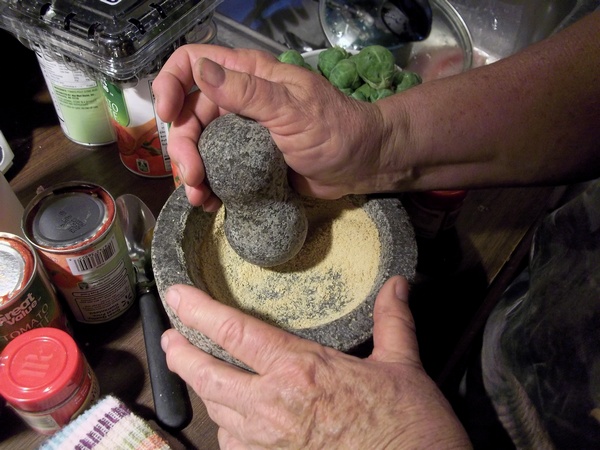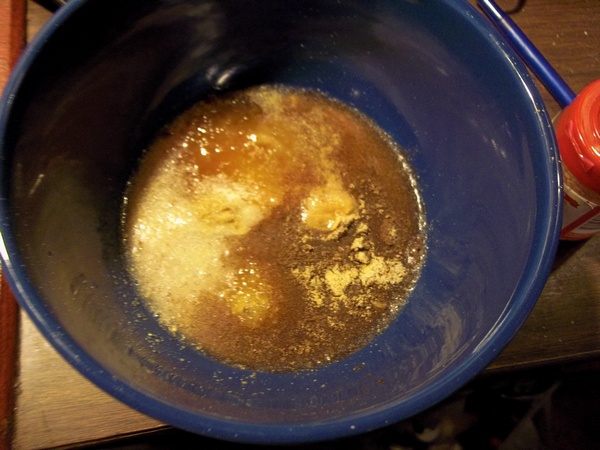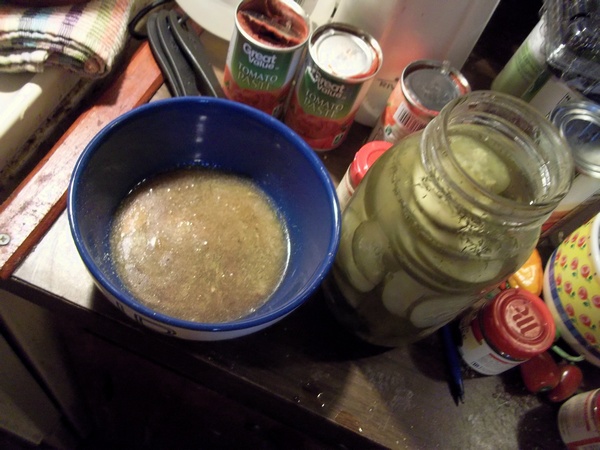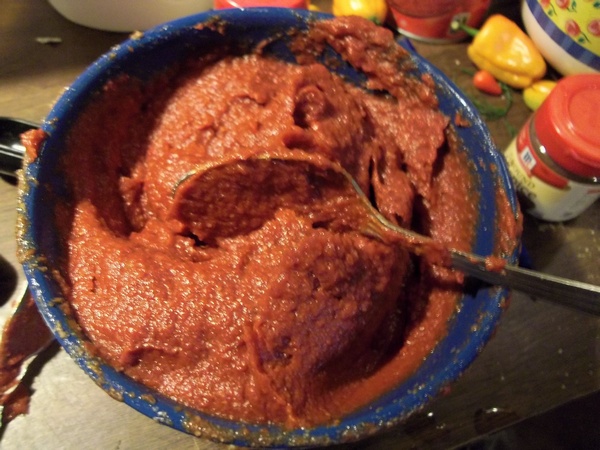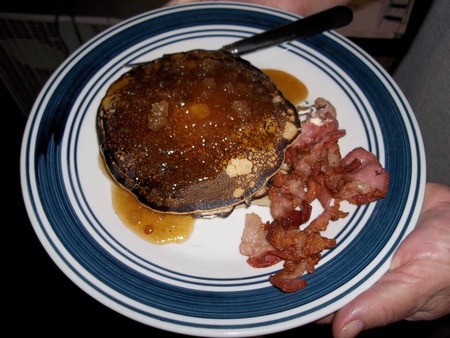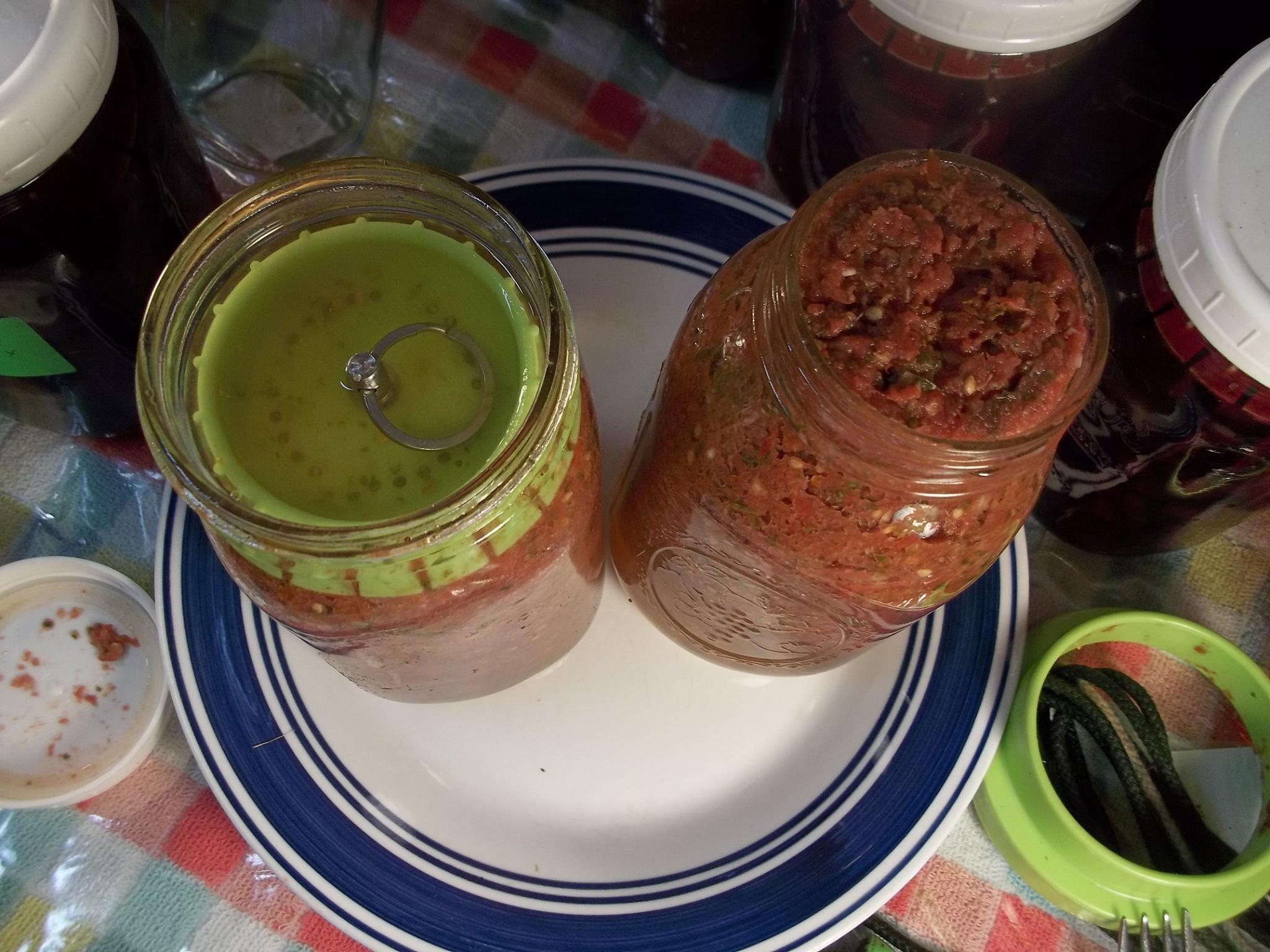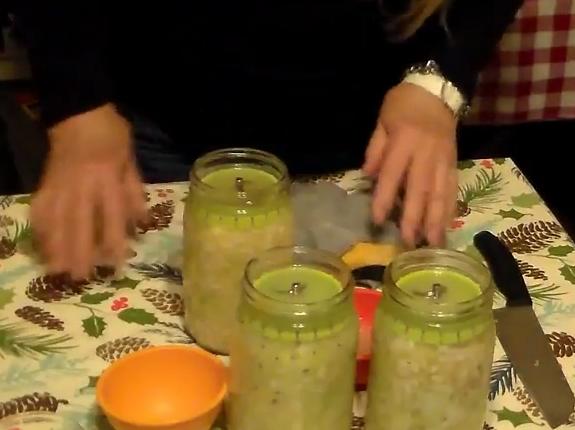Well this will be our first actual recipe.
We followed the recipe from Colleen at Grow Forage Cook Ferment which is a great site for any of the topics that their title mentions.
We changed it a little for a few reasons…. Mainly we did not like the fish sauce and another we got confused between table and teaspoon on the mustard seed and we added water which was not called for due to the mixture just being to stiff for ketchup in our opinions 🙂
Ingredients:
3 – 6 ounce cans tomato paste1/4 cup brine for a live ferment or whey. [we used a salty brine from some recent dill pickles ]
3 tablespoons vinager 5% and here we used regular when Miss Colleen’s called for apple cider vinager.
1-2 tablespoons honey.. Our honey was granular and we used 2 tbs.
1 teaspoon garlic powder…. We used 1/2 teaspn garlic powder and equal amount of onion powder
1/4 teaspoon allspice
1/4 teaspoon fish sauce… We didn’t add this and you should go to Colleen’s site for the original recipe.
.
We mixed it up and put in quart jar and will let ferment for 3-7 days
SPECIAL NOTE: The original recipe called for ACV [apple-cider vinegar ] for a reasons! If you use Bragg’s ACV, it is alive and not pasteurized which introduces live bacteria to your cooked/processed tomato paste! Would have sure helped to have known this before starting the recipe!
QUESTIONS AND ANSWERS:
1] Will the fermented ketchup be more red after fermenting? ANSWER: Not a lot
2] Will the fermented ketchup be more fluid after fermenting?ANSWER: Yes as we added a lot more liquid than the original recipe called for!
3] Will it taste as good as store-bought???ANSWER: Yes and no..it is after all a different recipe. Will it pass as ketchup? Definitely!
NOTE: AS WITH ALL FERMENTED FOODS WATCH CLOSELY FOR ANY MOLD DEVELOPING AS AN INDICATION OF POSSIBLE IMPENDING SPOILAGE.
Tune in later and we will let you know. If you try the recipe or Miss Colleen’s, let us know in the comment box below.
UPDATE: 2-21-2016: Added 4 more tablespoons of brine. We now have 700 ml in our jar. Still very thick and no sign of gassing . Another group member is doing same recipe and says her’s is doing about the same. The taste is developing but the fermentation is not as regular as a less dense fermenting project. MAY add 4 tablespoons of whey to see if we can get more action going but our brine was alive so it may just be the way a thick ferment acts? Like miso maybe but I do not want to wait 6 months for a coating for my fries 🙂
UPDATE: 2-23-2016: Added 4 tablespoons of kefir whey. We now have 800+ ml in our jar. Still very thick and no sign of gassing . The taste is developing but the fermentation is not evident. Actually 4 more tablespoons are on the way very soon as ketchup is still to thick to pour!
UPDATE: 2-27-2016: Added another 4 tablespoons of whey! We also were advised to add a latex glove to the jar to be able to tell if we were getting any volume of CO2 from the ferment! It was flacid for a while but finally with the help of a little heat from a lamp, it started growing! Our friend was also doing the recipe and had instant gassing on her’s! All we can figure is that the brine we used was not active as they were from older pickle ferment but not processed and the whey ….. well it should have worked we feel a little better. The tomato paste showed only tomato puree and citric acid as contents… NO PRESERVATIVES…. which we would have suspected of having a role in our slow ferment start. At any rate there is not spoilage and taste is great. Here is a short video before we remove the glove to check taste and replace to finish.
VIDEO HERE IN A WHILE…. STAY TUNED.
UPDATE: 2-27-2016: Results was a great tasting ketchup that would indeed be an addition to your table. We did learn a lot in making this recipe as we had another friend making it at the same time and compared results. She achieved faster fermentation activity than we did and this is critical when fermenting as getting the ferment up to the desired ph should be done as fast as possible. And I am sure the taste was close but we were not as she is in Netherlands!
WHAT WE LEARNED:
1] Tomato paste is not a fresh product and therefore has no naturally occurring lacto bacteria so it is important to use fresh fermented starter, brine from an active ferment you have going like kraut or pickles or as whey as last resort to achieve the initial kickstart towards fermenting!
2] The finished product has a little different “mouth feel” than processed ketchup. There is a more “grainy” feeling for lack of a better word. We did not use any emulsifier so that is to be expected. It is possible that we could have pulverized the mustard seed more.
3] Use Bragg’s Unfiltered ACV! It introduces bacteria into your tomato paste.
4] Add a sprinkle of salt and a squeeze of lemon juice when you start and when you open to taste. It will help prevent surface mold that can occur if your ferment is slow in starting!
5] All in all a nice and fun recipe that will make our next meal of french fries and hamburgers a lot more satisfying as the DIY spirit does really make things taste better and stimulates those good feelings 🙂
Please follow us on Facebook , Twitter and our website and join the mailing list where possible to be updated on new sales dates and product launchs.

